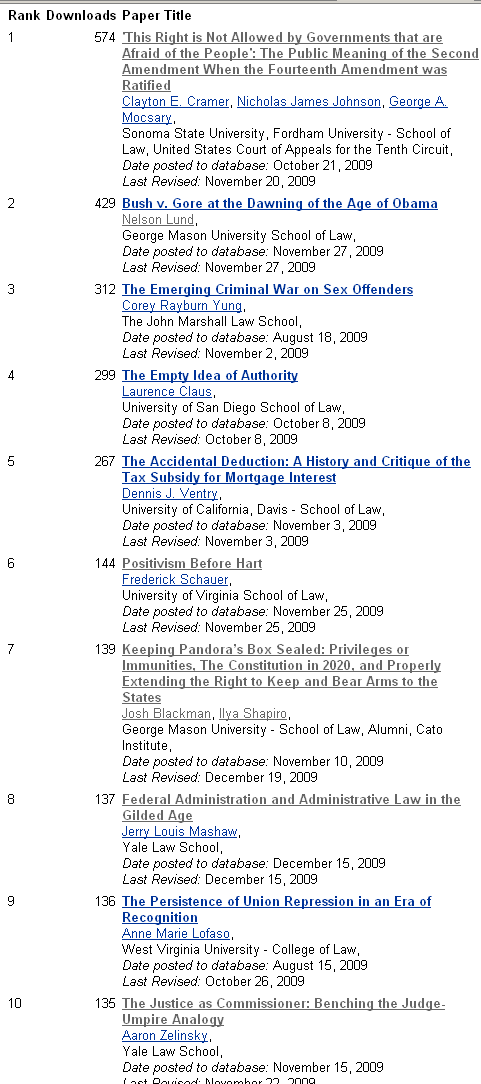Take a look at Richard Epstein’s Op-Ed in WSJ on why Obamacare is Unconstitutional. Any fans of Epstein should not be surprised his analysis revolves around – wait for it – the Takings Clause!
To control against the risk of confiscatory rates, the Supreme Court also required the state regulator to allow each firm to obtain a market rate of return on its invested capital, taking into account the inherent riskiness of the venture. The orthodox legal approach was summed up in Justice William Rehnquist’s unanimous 1989 decision in Duquesne Light v. Barasch. Duquesne Light allowed the state regulators a wide choice of methods so long as the “bottom line” secured the appropriate rate of return. There’s no need to discuss the fine points here, because not one syllable in the Reid bill is dedicated to securing that constitutionally guaranteed minimum rate of return.
Duquesne Light carries extra weight here because health-insurance industries are far from natural monopolies, so that regulating their rates calls for an extra dollop of judicial scrutiny. At this point, the Reid bill is on a collision course with the Constitution. I take it for granted that, constitutionally, the federal government could not just require all private health insurers to liquidate tomorrow, without compensation.
What’s done here is a close second. The inexorable squeeze between the constricted revenue sources allowable that insurers get under the Reid bill and the extensive and uncertain new legal obligations it imposes is likely to result in a massive cash-flow crunch that will drive the firms in the individual and small-group health insurance markets into speedy bankruptcy. The Supreme Court should apply the constitutional brakes to this foolhardy scheme if Congress doesn’t come to its senses first.
As much as I love Epstein’s argument, the Supreme Court will never stop this debacle. And it bothers me to no end that I have to hope 5 justices can save our liberty, when all our other branches have failed us. I said the same thing before Heller was decided. Our freedom should not depend on what side of the bed AMK woke up on.
I am not sure what obligation the Executive and Legislative branch have to assess the constitutionality of their actions, but today, both Republicans and Democrats, have entirely abdicated that responsibility. Epic Fail.

